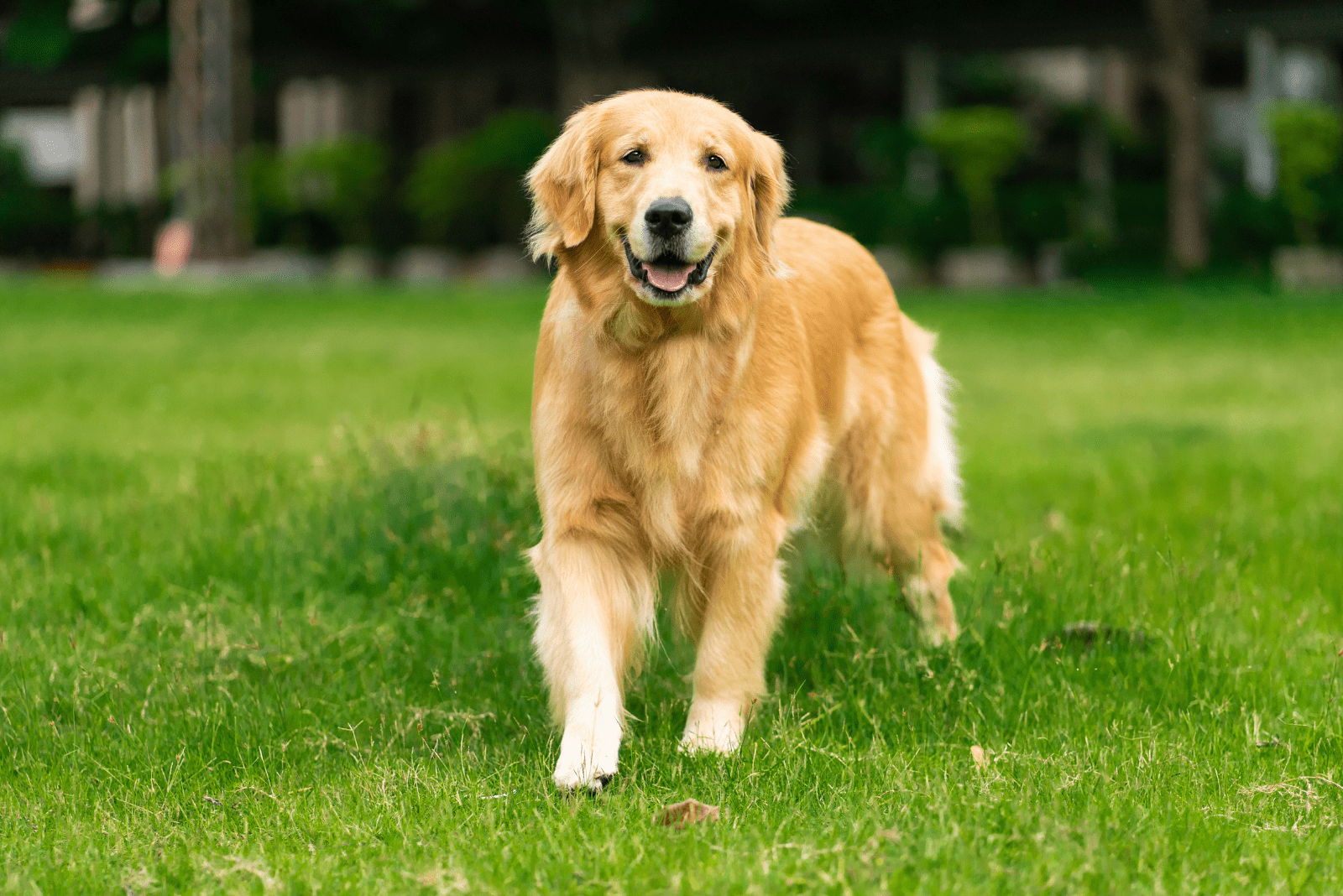Ah, the Golden Retriever—a classic American large dog breed that has captured the hearts of many! It is the unforgettable breed that has maintained its popularity due to their friendly, loyal, loving, clever natures.
You are most likely reading this article because you have already taken the first steps and found the best Golden Retriever breeders in the U.S. or the ones in the U.K. (depending on where you live).
Maybe you have even searched your way through all Golden Retriever colors and found your favorite one! Now you are thinking about more practical matters—like how much your Golden Retriever puppy will grow during its first few months.
We understand that you want to know everything about Golden Retriever growth. If you are under stress because you don’t know what to expect—you are not alone. There are so many people that are interested whether or not their puppy is maturing properly.
This is why we have decided to prepare all the information out there from puppy growth stages to weight changes throughout its development. Additionally, we have prepared many common questions regarding puppy growth that you might want to take a look at.
We have even prepared a special Golden Retriever growth chart as an easy way to check on your pup’s growth from month to month.
Sit back as we guide you through all of the ins and outs of Golden Retriever growth.
The Golden Retriever Growth Chart
We would love to give you a Golden Retriever growth chart that will be a one-size-fits-all for all Golden Retrievers, but it is not that simple.
You are probably aware of the differences between male and female Golden Retrievers, and growth and weight are one of these factors that should be considered.
Your pup will grow differently depending on whether it is male or female. Female dogs are known to grow more quickly than male dogs.
However, according to the AKC breed standard, male Golden Retrievers usually tend to be larger than females.
We have created a Golden Retriever growth chart for both sexes to make this process easier for you.
There are other things to consider when you are looking at this chart—if your dog was bred for show, it will be heavier than your standard Golden Retriever. However, if your dog was bred to be a working dog, then it will reflect in the sense that its weight will be lower.
The chart begins at seven weeks of age because it is supposed to reflect puppy weight during the first period of its life. It also contains the average weight of each growth stage.
If your pup falls into these ranges of the puppy growth chart, it is probably doing great!
Male Weight Chart
[table id=487 /]
Female Weight Chart
[table id=488 /]
Golden Retriever Puppy Growth Stages
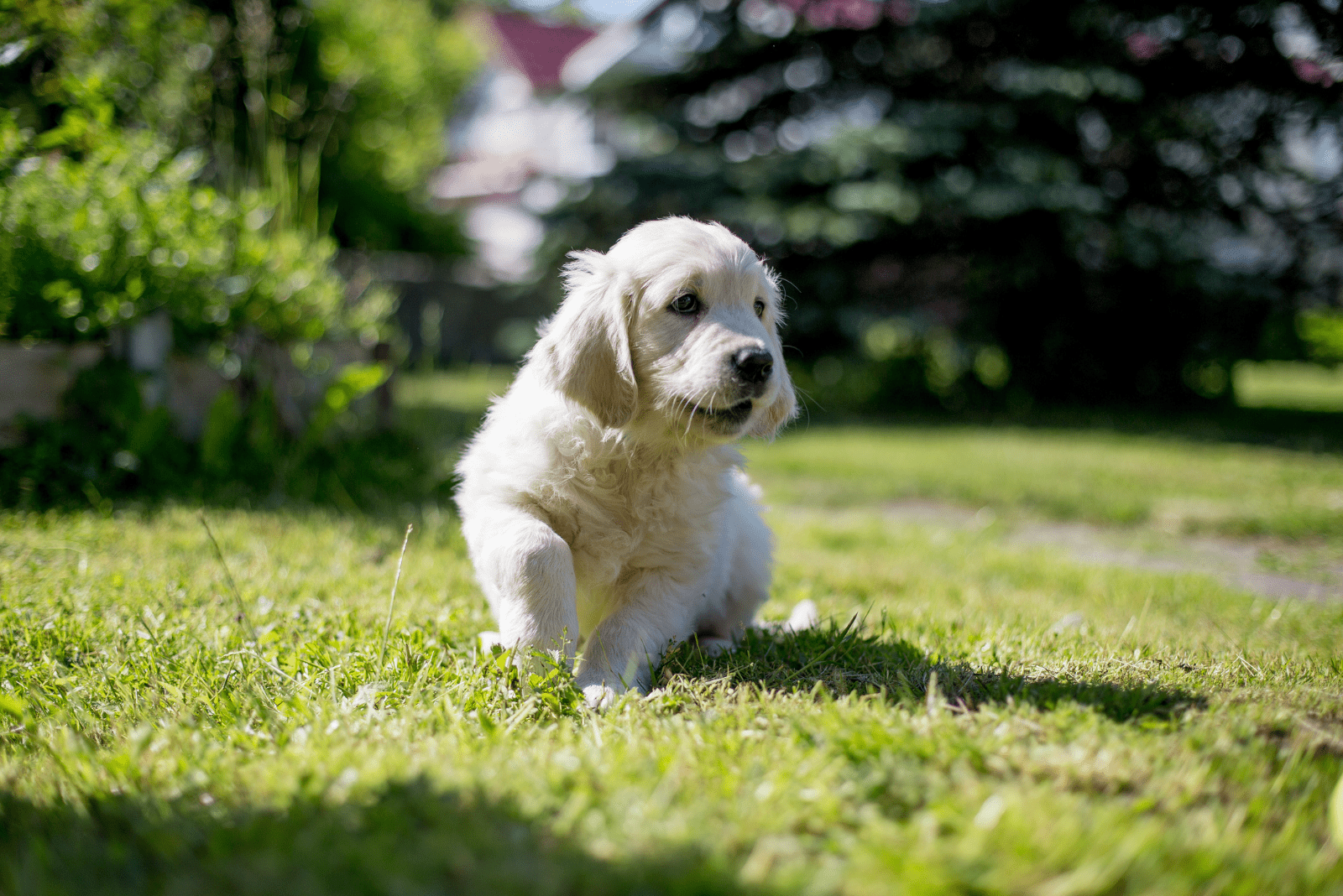
In this section, we will discuss other aspects of Golden Retriever growth rate, such as what to expect in each stage of its life. We will discuss all the similarities across each time period and all of the milestones that pertain to each stage.
You can also expect that depending on the stage you find your puppy, different care techniques might be necessary, as its needs will change and alter as it grows.
It is important to find a reputable breeder that will nurture all Golden Retriever puppies during crucial stages because such nourishment will affect how they grow.
The Neonatal Stage (Birth — 3 Weeks Of Age)
This is probably the cutest time period for all breeders and dog owners alike!
The neonatal stage usually stretches from birth till your pup is three weeks old. Your three-week-old Golden Retrievers will be completely dependent on their mothers, who will end up caring for them and feeding them until they are more independent.
You can expect their ears and eyes to open as they begin to make their way throughout the world by crawling, and finally, walking with instability (which results in a lot of cute videos!).
Their first baby teeth begin emerging as well.
Weight will fluctuate drastically during this time period, but most of the puppies will stay under five pounds.
Things to note
During this time period, you might want to pay attention to the puppies that might be the runts of the litter, which means that they are usually smaller than their siblings.
These pups can oftentimes have trouble competing for resources—such as food and warmth from Momma because they are weaker than other pups.
If you notice that you have a runt in the litter, you might have to take care of it in case things get a little out of hand. Otherwise, the poor puppy may die.
Things might get particularly difficult if the runt is born in a huge litter. A Golden Retriever female might give birth to four to twelve pups at one time, with eight puppies being the average.
If the mother senses that her litter is too large, she might intuitively reject the runt due to the evolutionary instinct of natural selection.
Milestones takeaway
• The puppies eyes and ears open for the first time
• The puppies baby teeth begin emerging
• Pups begin to learn how to move— they proceed from crawling to walking unsteadily
The Socialization Stage (3 Weeks — 12 Weeks Of Age)
The socialization period is one that typically lasts from three weeks to twelve weeks of age. This stage can be very fun and cute—make sure you prepare your phone for lots of memorable moments!
During this stage, puppies will begin exploring their worlds much more intensely, which is necessary for them in order to develop properly—a curious puppy is a healthy puppy!
Puppies will still be drinking milk from their mother, but you should begin to introduce puppy dog food so that they are prepared when Momma’s milk will no longer do the trick. They will grow very rapidly at this point in time.
It is called the socialization period for a reason: they are in the sensitive period in their lives when they should be maximally exposed to a variety of people and animals so that they are agreeable when they get older.
They will play much and begin building useful habits that are important—such as learning how to nip playfully as opposed to biting aggressively. They will also become much louder than before—expect much vocalization in the form of growling and barking.
Things to note
This is also a time period noted for puppies’ ability to begin controlling bowel movements and bladder. You might see them moving away from the bed and their mother to begin relieving themselves. When you notice this occurring, it is a sure sign that you may begin training them.
This is also the time period when puppies might begin developing certain fears from new experiences, especially because they are exploring their environments so intensely—so many things to learn!
Bad experiences faced during this time period might last for a long time if not properly dealt with.
You can help them by guiding them and introducing them to a variety of items that they will end up seeing on a regular basis in a gentle way so that they are positively reinforced. Such items might be vacuum cleaners or hair dryers, which are known to spook all animals a bit.
You might also want to introduce them to car rides, so that they are used to being in moving vehicles.
You don’t have to be particularly worried if your puppy seems to be particularly jumpy at this age—that behavior will pass as time goes by and it becomes more confident with how it interacts with the world.
Milestones takeaway
• Puppies will begin eating dog food
• Puppies will be very open to new experiences and curiously explore their territory
• Puppies begin to play
• Vocalizations in the form of growling and barking begin
• Puppies begin gaining control over bowel movements and bladder. They will begin getting potty-trained.
• This is also the time period where puppies should be getting their first vaccinations
The Juvenile Stage (3 Months — 6 Months Of Age)
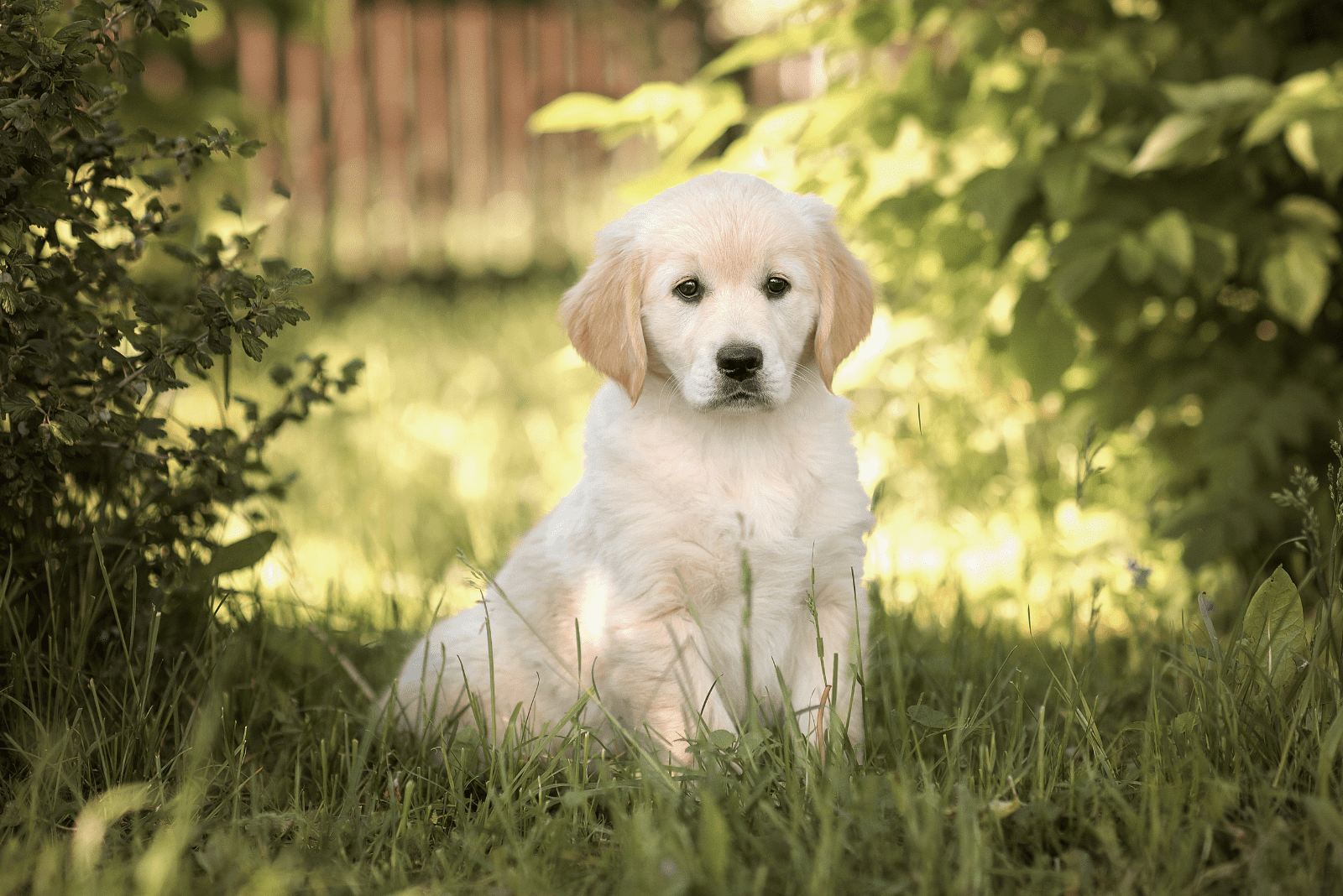
You can expect your puppy’s growth to decline during this time period between three months and six months of age. Their development will have begun taking its final form. They appear like adult dogs—the only difference is that they are smaller
At this time, you may expect your puppy to begin losing its baby teeth while their adult teeth start growing. It is also at this age that puppies will begin getting adopted into their forever homes where they will find happiness with their new families away from their mother.
Things to note
You will need to start training your puppy at this time period because the habits that they develop at this stage will last for a lifetime.
When you are training your adorable pup, make sure that you consistently apply all rules through positive reinforcement. This will encourage your dog to integrate what you expect of it while simultaneously developing a trusting relationship between the two of you.
Try not to use any negative reinforcement in your training, as developing fear is not great for your dog’s confidence. Dogs that are raised with fear as their primary motivator in training will develop long-term negative habits that are neither good for them or the owner in the long run.
This is also the time period that you want to consider having your dog spayed or neutered, depending on its sex.
Usually, dogs undergo this procedure before they reach the age of sexual maturity, but you still want to check with your vet about the signs your dog needs to be neutered or spayed to make sure you are doing right by it.
Milestones takeaway
• Your puppies adult teeth will start growing
• This is the time period in which puppies can be adopted into forever homes
• You should start training your pup to ensure healthy lifelong habits
• Depending on what your vet suggests, you might want to spay or neuter your pup
Sexual Maturity (6 Months — 16 Months Of Age)
During the time period between six months of age and sixteen months of age, your adorable Golden will grow to its full size. If you have decided not to spay or neuter it, it will also start showing signs of its sexual maturity and will be interested in mating other dogs.
Because its sexual maturity is often tied to dominance and finding its place among other dogs or humans, you can expect your Golden Retriever to begin showing interest in claiming its own territory.
When it comes to its physical appearance, it might seem as though your pup has rather large legs in comparison to its body, but that is nothing to worry about—the proportion will even out in due time.
You can expect its nose and ears to grow more rapidly than the rest of its body parts.
Because their bones grow rapidly during this stage, they are more prone to injury, which can be challenging and stressful for dog owners.
You might want to make sure that you do not overwork your dog by having it train on obstacle courses that require any stunts that will put much pressure on your dog’s developing joints.
Milestones takeaway
• Your pup will start displaying interest in mating if it has not been spayed or neutered
• Your dog will show more signs of territorial behavior
• You can expect your dog’s nose, ears, and legs to look a bit larger compared to the rest of its body
• Be aware of overworking your dog by having it put too much pressure on its developing joints
Adulthood (16 Months Of Age +)
After the sixteen-month period, Golden Retrievers are considered to be fully grown, even though they might still gain some weight here and there. They will have reached their full height.
Males will be approximately twenty-three to twenty-four inches tall, whereas females will be anywhere between twenty-one and twenty-two inches tall.
You do not have to necessarily worry if your Golden Retriever looks a bit thinner than you might expect, as it takes about two years for Goldies to fully grow into their full size. It might take an additional year for certain features, such as face and head, to fully develop.
You can expect your dog’s weight to be anywhere between sixty-five to eight pounds for males and fifty-five to ninety pounds for females, depending on each pup’s growth spurt.
If you suspect that your pup is having issues achieving average Golden Retriever weight, you might want to have a chat with the vet.
You might also find that your pup still carries with itself certain characteristics from puppyhood, which is totally normal and adorable. It is what makes this breed of dog so fun and loving for dog owners out there.
Milestones takeaway
• Your dog will have reached its full size and weight
• You can expect certain characteristics to be more constant
• Their coat has fully developed
• Sometimes, long hair might start to grow along the leg and tail areas
Risks Associated To Abnormal Growth Rates
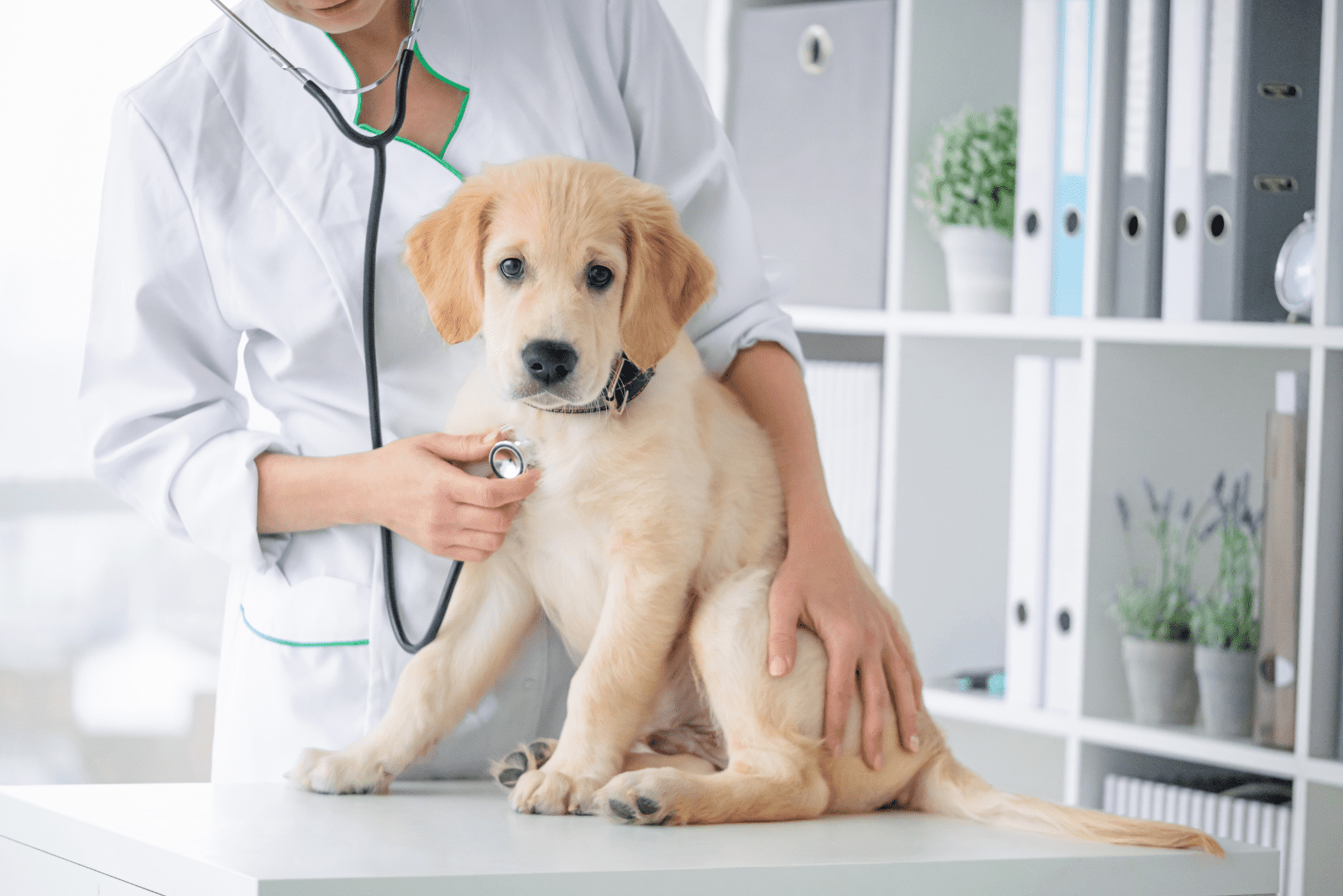
We understand that each dog has its own individual growth rates that are a result of a variety of factors, most of which are perfectly normal. For instance, you can be pretty sure that the genetics of your dog plays a huge role when it comes to its final adult size.
Even though a bit of variety is not anything to sweat about, the same cannot be said about accelerated or stunted growth.
If you find that your Golden Retriever puppy becomes underweight as a result of certain medical conditions, it can impede its natural growth, which is why you want to have a good relationship with the vet.
The truth of the matter is that certain conditions can affect your dog’s health permanently, leaving their organs and immune system harmed in the process.
If you find that your Golden Retriever pup is becoming overweight as a result of overfeeding, you might want to reconsider how much food you are giving it, because conditions such as obesity can severely affect your dog’s health.
If your dog weighs too much during certain development stages, he or she might suffer from unnecessarily conditions such as hip dysplasia, osteochondrosis, or other skeletal issues that you would rather avoid.
What To Do For Healthy Puppy Growth
As your Golden is developing throughout time, you can do many things to help it stay healthy. Every single purebred dog breed has its challenges when it comes to specific genetic diseases related to the breed, and Golden Retrievers are no different.
Here are things you can do today to help ensure your puppy’s health.
1. Give Your Pup A Good Diet
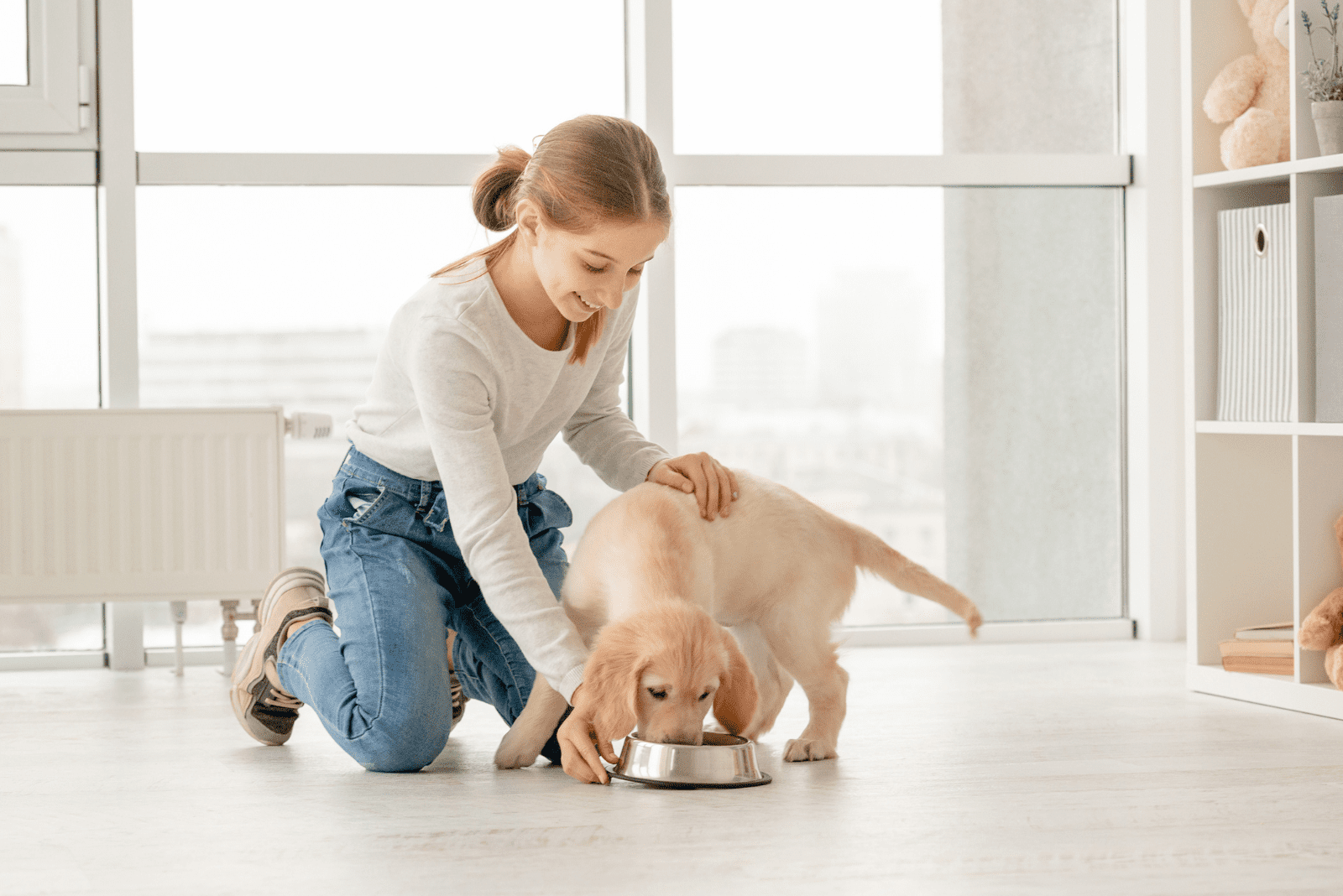
The most important thing you can do is ensure that your dog has a diet that pertains to the life stage that it is at. Nutritional needs are different depending on the life stage your dog is in.
That means that you want to give your puppy food that is created for puppies and your adult Golden food made for adults. Don’t feed your seven-week-old the same thing you would to an adult Golden Retriever!
Since Golden Retrievers are a large dog breed, make sure that the dog food you are giving your dog is nutritionally compatible with large dog breeds.
When your dog is on a proper diet, it will reflect in its weight, healthy appearance, and activity levels.
2. Have Your Golden Exercise Regularly
Just like humans, Golden Retrievers were not meant to lie around all day and do nothing. Your Golden will gain extra weight if it does not exercise regularly, which might negatively affect its health.
However, when your Golden Retriever is still a puppy, you don’t want to overexert it, since that can also negatively affect its growth as well.
Depending on how old your pup is, you will have to ensure that it exercises regularly to gain skeletal and muscular strength and combat obesity.
Exercising your dog regularly will also allow it to become more graceful and agile, prevent it from unleashing unused energy on house old items, and stop unwanted mischief that could easily be directed to exercise.
3. Make Sure Your Golden Gets All Vaccinations
Once you adopt your puppy, you will have to speak to your vet to figure out what sort of vaccination is necessary for your furry best friend.
Certain factors such as your Golden’s individual health (and its littermates’) as well as the location in which you reside, might affect the vaccinations your pup needs.
With proper vaccination, you might be able to prevent unwanted diseases such as distemper, hepatitis, rabies, and the parvovirus. These diseases could potentially disrupt your puppy’s health and growth if not dealt with through vaccines.
4. Treat Diseases As They Arise
We all hope your puppy will never have health issues, but the truth is that a lot of dogs will get sick from time to time.
Certain illnesses, such as the development of genetic diseases, are worse than others. Make sure you treat illnesses such as tumors or aortic stenosis on time, as letting these diseases fester will do no good for your dog’s health in the long run.
You also should pay attention that your dog gets regular check ups. By doing this, your vet has a higher chance of diagnosing a disease in its earlier phases, and treatments will consequently be more successful.
You also might want to sign up for health insurance, as this could be great for your dog’s overall lifespan.
Additional Thing To Note
In order to watch out for health problems, you can also pay attention if your dog is behaving strangely or appears ill.
A sign that your pup is doing well is when he or she falls within the range of weight for his or her age. A healthy puppy also has high activity levels and their coat and eyes are shiny.
If you notice that your puppy has dramatic weight gain or loss—or other strange signs such as bumps under its skin, digestive problems and the like—it might be time to visit your vet. If you don’t treat you Golden on time, it might severely impact its growth.
At What Age Are Golden Retrievers Fully Grown?
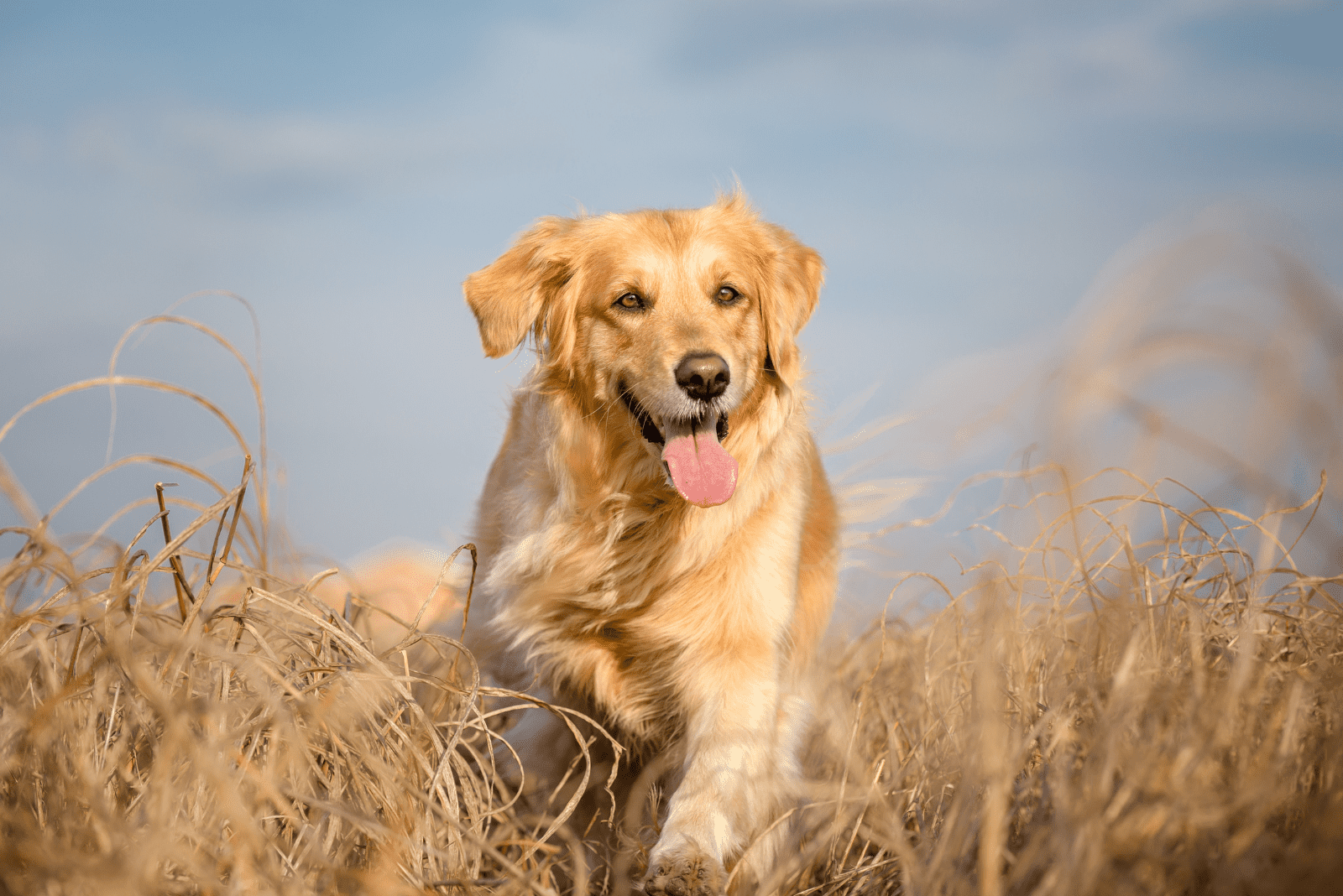
You might be wondering when do Golden Retrievers stop growing.
Your Goldie will grow in weight until he or she reaches the age of eighteen months. You don’t have to be too worried if your dog is on the thinner side when it reaches adulthood because it will gain weight as it grows older.
When your dog looks like it has gained the proper amount of weight for an adult, you will have to switch them from puppy food to high-protein adult dog food. You will also have to stop feeding them as often—puppies need to be fed more frequently than adults.
Even though your eighteen-month-old dog might look like an adult, it still develops mentally until it is two to three years old, with the female developing more quickly than the male.
You should know that many Goldies always retain their puppylike behaviors, even when they are senior dogs. It is the charm of being a Golden Retriever.
However, you cannot allow rough and tumble play serve as an excuse for bad behavior.
How Can I Tell How Big My Golden Retriever Will Be?
We all know that the male Golden Retriever weighs more than the female, but did you know that there is more to growth than sex differences?
Other than genetics, a good way of figuring more about dog growth will be to look at what kind of Golden Retriever your dog is.
There are three different types of Goldies: American, British, and Canadian.
You can expect the American and British Golden Retrievers to be relatively similar to one another when it comes to size. The American, however, is less heavily built when it comes to musculature. It tends to be on the thinner side, and this fact also reflects in its weight.
The Canadians are more unique than the rest because their coat is less…well, fluffy. They also are taller than their siblings—usually an inch or two taller in height.
What Is The Biggest Type Of Golden Retriever?
We talked about the differences between the American, British, and Canadian Golden Retrievers earlier—it is important to note that the Canadian surpasses each type in terms of body structure and height.
However, it is not noticeably bigger than the American and British Golden Retrievers, as it is only about one or two inches taller.
The main difference lies in its musculature which makes them look vividly larger.
What Is The Average Height Of A Golden Retriever?
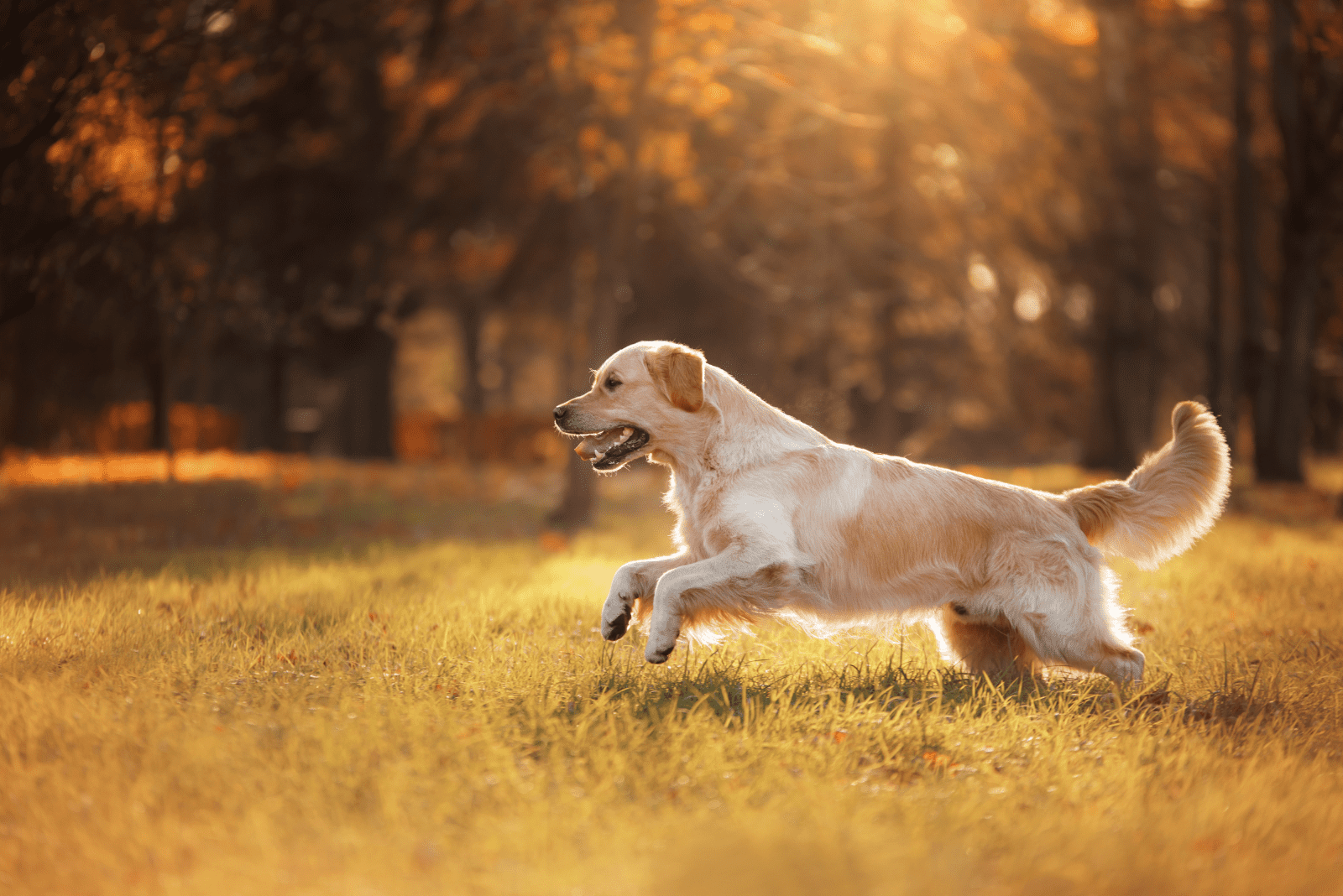
You can expect your Golden Retriever to reach its maximum height when it is between sixteen months and a year old.
When it reaches its second birthday, a typical male Golden Retriever will be anywhere between sixty-five to eighty pounds in weight, reaching its adult height of twenty-three to twenty-four inches.
When it is two years of age, a female Golden Retriever will weigh anywhere between fifty-five and ninety pounds, reaching her full height of twenty-one and twenty-two inches.
Golden Retrievers stop growing taller when they are anywhere between nine months and twelve months old. You can expect your female Golden Retriever to grow more quickly than your male; however, the latter will almost always be taller than the former.
How Quickly Will My Golden Retriever Grow?
If you are going to compare the Golden Retriever to other dogs, you can say that they grow fairly quickly.
Between seven and eleven weeks old, you can expect your Golden Retriever pup to gain mass at a three-percent rate. Female Golden Retrievers grow more quickly than males, and will reach their adult size at the age of twelve months. Males take eighteen months instead.
Both male and female need an additional year in order for certain areas, like their chests, to fully grow in.
When it comes to height, both male and female will reach their maximum between nine and twelve months of age, with the female achieving this milestone more quickly than the male.
How Big Will My Golden Retriever Be?
You will want to look at your Golden’s parents. It is quite rare that a pup will be bigger than its mom and dad.
Make sure you ask the breeder to get to know your puppy’s parents before adopting it. You might also want to look at the size of the parents’ litters from before to get an idea of how big the other puppies from the same parents look like.
Will Neutering Or Spaying My Golden Retriever Early Affect Its Growth?
There might be many benefits of neutering or spaying your dog when it comes to your dog’s health. One of these involves preventing certain cancers such as mammary, uterine, ovarian, testicular, and other types of cancers in Golden Retrievers.
Additionally, when you undergo this procedure, it might solve certain behavior problems that dogs might have if they keep their reproductive organs.
However, there has been some research done that neutering or spaying your dog before its time might have adverse effects on its growth.
The issue of the matter lies in the fact that your Golden’s reproductive system releases hormones that play a role in your puppy’s growth—especially when it comes to tendon and ligament development.
Certain research has indicated that puppies that go through the process of spaying or neutering have greater occurrences of something called cranial cruciate ligament tears and even hip dysplasia.
This is why you want to be in contact with your vet to see what is best for this large breed, whether you have a female puppy or a male.
Conclusion: Golden Retriever Growth Chart
We hope that we have answered all of your questions about Golden Retriever growth, and that you have found the Golden Retriever growth chart that we have created for you useful in the long run!
Make sure that you are always on the lookout when it comes to your Golden Retriever’s growth for any signs of illness. You also want to make sure that your Golden is hitting all of the milestones that are important for their development.
This is precisely why we have created the Golden Retriever growth chart—you want to make sure that your pup is healthy so that it can be the best dog for you and your family.
You also want to pay attention to any signs of malnourishment and obesity, as well as accelerated or stunted growth.
Even though every single dog is different, there is generally a trend when it comes to average weights and heights that every dog should fall into the range of.
However, even though your dog might not fall quite into the weight range, you might not have to worry if it is following its own individual growth curve. Just make sure to check with a vet if you find anything suspicious with your dog’s development.
Read Next:
• Whippet Growth Chart — Is My Whippet Normal?
• Rough Collie Growth Chart: How Big Does Lassie Get?
